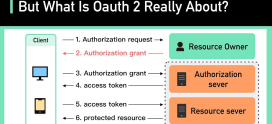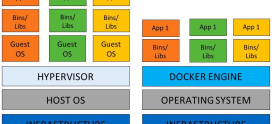
The Role of AI and Machine Learning in Server Security
When you think about server security, what comes to mind? Maybe it’s thoughts of data breaches, hacking attempts, or even viruses sneaking into your information. It’s a lot to worry about, isn’t it? You’re not alone in this concern; many people and businesses feel the same way. With the rapid evolution of technology, it can feel like security is always one step behind the latest threats. But what if I told you that solutions are now emerging to tackle these worries head-on? Enter AI and machine learning. These powerful tools are not just for tech whizzes; they’re making a real difference in keeping our data safe. Imagine having a virtual guardian that learns and gets better over time—sounds reassuring, right? Let’s dive into how AI and machine learning are reshaping the landscape of server security, offering practical solutions to our collective fears.
Understanding the Basics of Server Security
Before we delve into how AI and machine learning come into play, it’s essential to understand server security’s fundamental aspects. Think of server security as the locks on your front door. Just as locks deter unwanted intruders, server security measures protect data from unauthorized access. This includes everything from firewalls and encryption to monitoring and auditing.
However, traditional methods alone can sometimes fall short. Cyber threats have become more sophisticated. This is where AI and machine learning enter the scene—offering innovative solutions that adapt and respond to emerging threats.
The Rise of AI and Machine Learning
AI, or artificial intelligence, refers to computer systems designed to perform tasks that typically require human intelligence. This includes tasks like reasoning, problem-solving, and learning from previous experiences. Machine learning is a subset of AI that allows systems to learn from data, identify patterns, and make decisions without being explicitly programmed to do so.
In the context of server security, this means systems can detect potential threats faster and more accurately than ever before.
How AI and Machine Learning Enhance Security Measures
Real-Time Threat Detection
Imagine you’re a security guard monitoring a busy street. Your eyes can only watch so much at once, and sometimes, the action happens too quickly for you to respond. Now, picture a trusty sidekick with a keen eye that alerts you instantly whenever something seems off. That’s what AI and machine learning do for server security.
They analyze vast amounts of data at lightning speed, flagging unusual patterns that might indicate a security threat. For instance, if there’s a sudden spike in login attempts from a particular IP address, machine learning algorithms can identify this as potential unauthorized access, allowing for immediate action.
Behavioral Analysis
Every person has unique habits, including how they interact with digital systems. By tracking user behavior, AI systems can establish a baseline of normal activity. Suppose an employee who typically logs in from the same location starts accessing the server from a different country at odd hours. In that case, a red flag is raised, prompting further investigation. This is analogous to someone changing their routine; your intuition tells you something might be off, and you look into it.
Automated Responses to Threats
Much like a smoke alarm that triggers when there’s a fire, AI-driven systems can automatically respond to security threats. Once a threat is detected, the system can take immediate action—like isolating affected servers, blocking suspicious IPs, or even shutting down certain access points. This immediate reaction minimizes the risk of data being compromised.
A Case Study: Real-World Application of AI in Server Security
One of the best ways to understand the impact of AI and machine learning in server security is through real-world examples. Take the case of a large tech company that faced repeated cyber-attacks. Despite having traditional security measures in place, hackers were still finding ways to breach their defenses.
After integrating AI and machine learning into their security protocol, the company noticed a significant change. The AI system learned from previous attacks, allowing it to detect patterns and anomalies much more effectively. Within months, they reduced successful attacks by over 40% and significantly improved their incident response time.
Such success stories highlight the increasing reliance on intelligent systems to safeguard our data.
Key Features of AI-Powered Security Solutions
- Predictive Analytics: Anticipate threats before they occur.
- 24/7 Monitoring: Constant vigilance without the fatigue of human oversight.
- Scalable Solutions: Grow your security measures as your business expands.
- Enhanced Accuracy: Reduce false positives with smarter threat detection.
Challenges in Implementing AI and Machine Learning
While AI and machine learning present incredible opportunities, it’s crucial to be aware of potential challenges. For instance, integrating these technologies can be complex and may require significant investment. Furthermore, there’s the risk of over-reliance on technology, spotlighting the importance of human oversight.
Additionally, as things evolve, so do cyber threats. Hackers are becoming more adept at mimicking normal user behavior, which means AI systems must continually learn and adapt. It’s a constant cat-and-mouse game.
Looking Ahead: The Future of Server Security
As technology continues to evolve, the best defense is one that adapts and innovates. AI and machine learning are here to stay, shaping how we protect our digital assets. This evolving landscape means that server security will become increasingly proactive rather than reactive, focusing on prevention rather than just response.
By staying informed and embracing these new tools, both individuals and businesses can ensure they’re doing everything possible to protect their data.
FAQs
What is server security?
Server security refers to the measures and tools designed to protect servers from unauthorized access, data breaches, and other cyber threats.
How does AI help in server security?
AI enhances server security by providing real-time threat detection, behavioral analysis, and automated responses to potential threats.
Are there drawbacks to using AI in security?
Yes, challenges include high implementation costs, the risk of over-reliance on technology, and the necessity for constant updates to adapt to new threats.
Can small businesses benefit fromAI and machine learning in security?
Absolutely! AI and machine learning solutions can be scalable, allowing even small businesses to enhance their server security effectively.
What are predictive analytics in server security?
Predictive analytics use historical data to identify patterns and predict potential future threats.
Do I need a team of experts to implement AI security tools?
While having experts can be beneficial, many user-friendly AI security solutions require minimal technical expertise.
Conclusion
In a world where digital threats are constantly evolving, it’s entirely natural to feel overwhelmed by the need for robust server security. But remember, you are not alone. By embracing AI and machine learning, we have powerful allies in the fight against cyber threats. From real-time threat detection to automated responses, these technologies offer solutions that enhance our security measures significantly.
As we continue to innovate and adapt, the future of server security shines bright, giving us reason to feel more secure in our digitally connected lives. If you’re ready to take the next step in securing your data, consider exploring AI-powered security options today—you won’t regret it!









